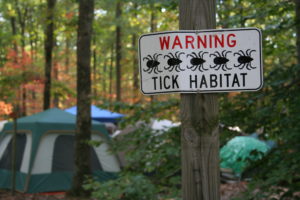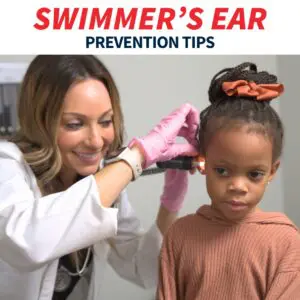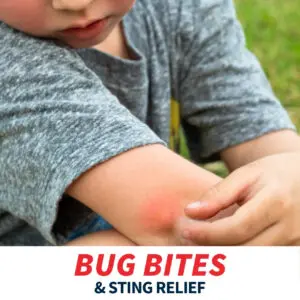All About Ticks
 Going outside in great weather is almost a necessity, whether it’s to do yard work or to go for a hike. No matter where you go, you’re almost guaranteed to run into bugs of all kinds, some harmless, others not so much. Unfortunately, everywhere in the United States is home to at least one type of tick. These insects, while small, must be removed carefully and are capable of spreading a variety of diseases that require medical treatment.
Going outside in great weather is almost a necessity, whether it’s to do yard work or to go for a hike. No matter where you go, you’re almost guaranteed to run into bugs of all kinds, some harmless, others not so much. Unfortunately, everywhere in the United States is home to at least one type of tick. These insects, while small, must be removed carefully and are capable of spreading a variety of diseases that require medical treatment.
Where Ticks Live
Different tick species can be found all across with U.S., some only in specific areas, while others live everywhere. Although they can be found anywhere, they are more commonly found in grassy, bushy, or wooded areas, and can also be transferred from animals that spend time outdoors. You don’t need to do much to be exposed – simply going outside puts you at risk, even in your own yard.
Diseases Caused by Ticks
There are a variety of diseases that can be spread by ticks, many depending on which tick you’ve been exposed to. The most commonly known is Lyme disease. Those affected experience a fever, headache, fatigue, and a unique rash. Unfortunately, if left untreated, many of the diseases spread by ticks can be quite dangerous, so any symptoms that may appear around the time of a tick bite – even after removal – should be evaluated right away by a physician so a treatment plan may begin.
Preventing Ticks and their Bites
Don’t let the threat of a tick bite keep you from doing the activities you love. There are simple things you can do to avoid ticks and lower your risk of contracting a tick-borne illness.
- Avoid Contact: If you’re going to go out for a walk on the trails, be sure to stay close to the center of the path and stay out of any wooded, brushy, or grassy areas that could make it easy for a tick to be transferred onto you.
- Use Bug Spray: Any product that utilizes DEET, picaridin, IR3535, Oil of Lemon Eucalyptus (OLE), para-menthane-diol (PMD) or 2-undecanone are effective at repelling ticks. Of course, always read directions for application and do not use any on children younger than 2 months of age.
- Be Diligent When Coming Inside: Even if one hasn’t latched onto your skin, ticks can still be present on your clothing or wandering around to find the perfect spot. When you come inside, thoroughly check your clothing, or toss them in the dryer on high heat for 10 minutes. Check over any gear, as well – such as tents, blankets, and more – and look over your pets, as well. Take a shower within 2 hours to potentially wash away any unattached ticks and be sure to perform a thorough body check on yourself.
When performing a body check, it is important to look everywhere, so utilize a mirror to help you take a peek at any hard-to-view areas. Ticks will typically try to latch onto areas that are warmer on the body, so always check:
- Under your arms
- In and around your ears
- Inside your belly button
- The back of your knees
- In and around your hair
- Between your legs
- Around your waist
For pets, it is important to be proactive by providing them with a prevention method. Dogs are the most susceptible as they generally spend the most time outdoors, and there are no vaccines available for tick-borne illnesses. Your veterinarian will be able to recommend the best product for your pet, whether a topical medication or chewable. Be sure to also check pets daily and remove any you may find right away.
Having your yard treated and performing proper maintenance will also help prevent tick bites and illnesses. Contact a local pest company for proper pesticide application to reduce the number of ticks that may be present. You can also help by removing areas they may thrive, such as leaf litter and tall grass or brush. Mow your lawn regularly, and keep any playground equipment, decks or patios away from yard edges and trees.
Removing a Tick
Ticks aren’t like typical bugs, and great care must be taken for proper removal. This can be done at home by simply using a pair of tweezers.
- Grab the tick as close to the skin as possible.
- Pull the tick upward steadily and with even pressure. Do not twist or jerk the tick in order to prevent breaking off the mouth-parts in the skin.
- Thoroughly clean the area with rubbing alcohol or soap and water.
- Ticks should be disposed by putting it in alcohol and placing in a sealed bag or container then wrapping tightly in tape or flushing it down the toilet.
It’s important to remove a tick as soon as possible – do not wait for a tick to eat its fill and leave on its own. Any symptoms that develop within several weeks of removing a tick should be seen by a doctor right away. This will help the doctor rule out possible tick-borne illnesses or decide appropriate treatment as needed.
Of course, if you wish to have the tick removed in a safe and more sterile environment, visit us at one of our convenient Midwest Express Clinic locations today. We are also here to help with any symptoms you may be experiencing after a recent tick bite, and no appointment is necessary.




